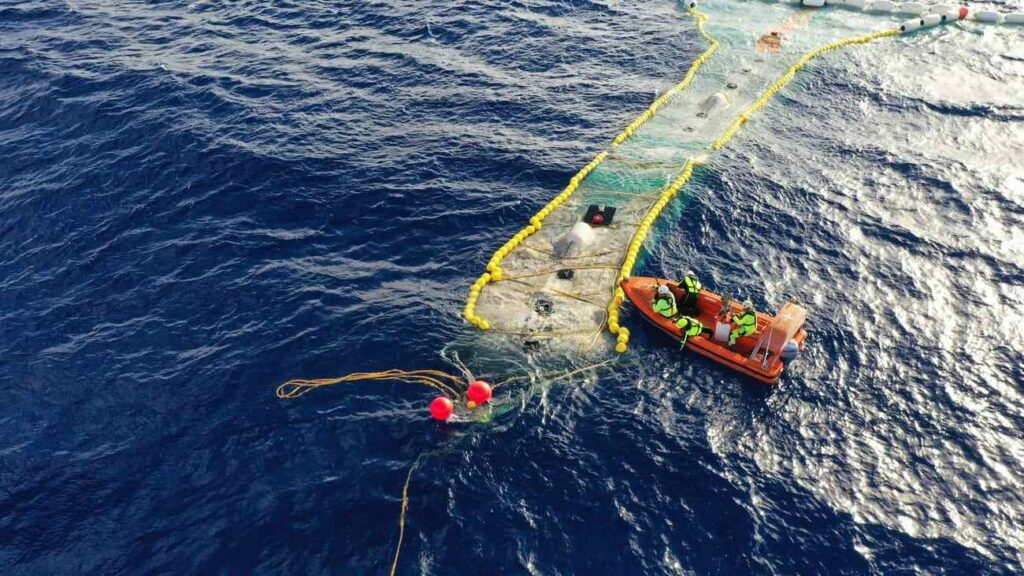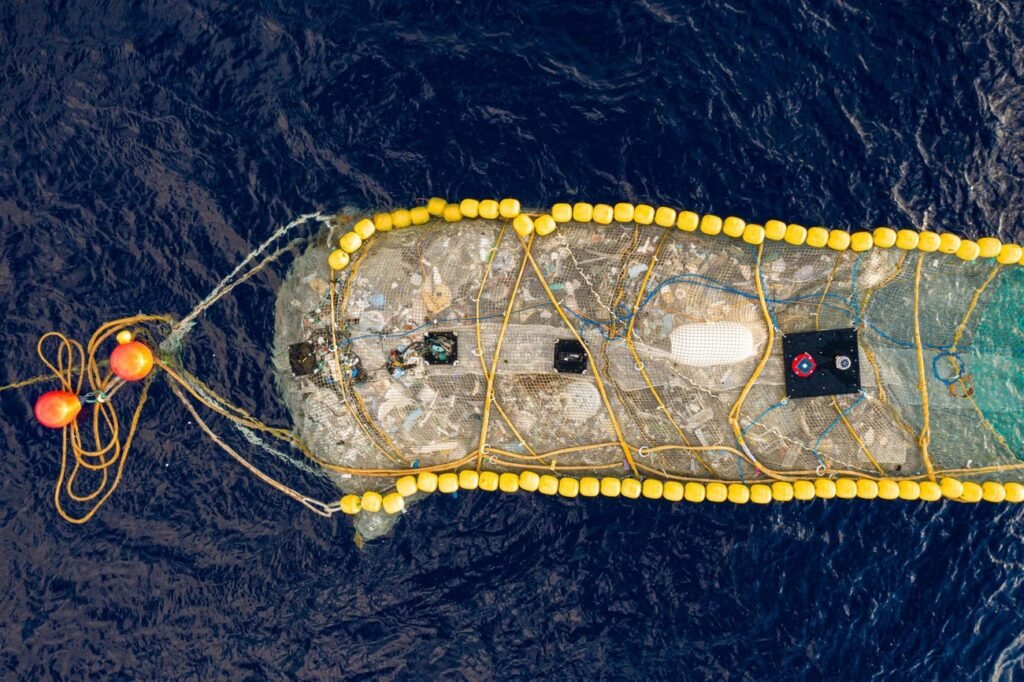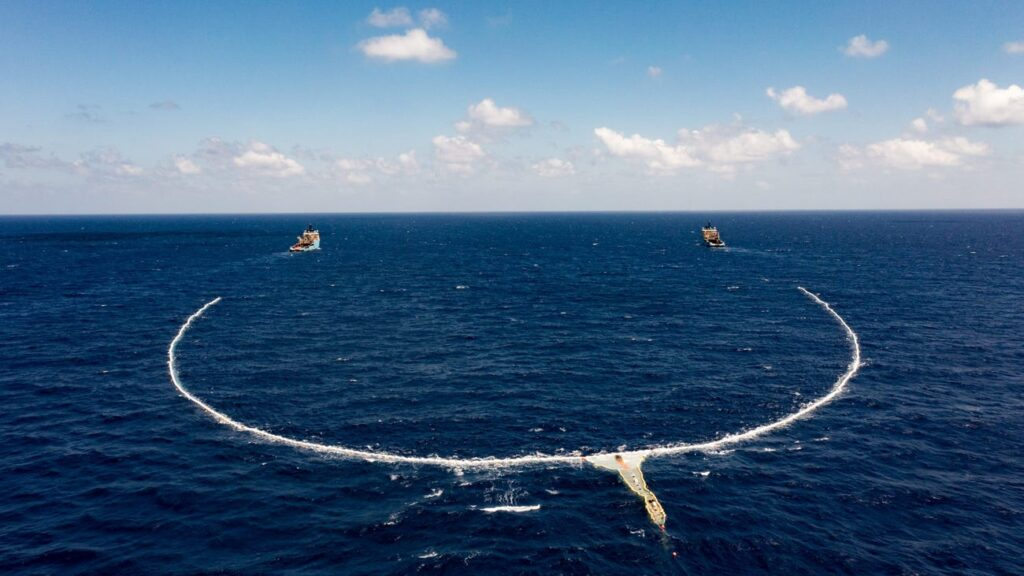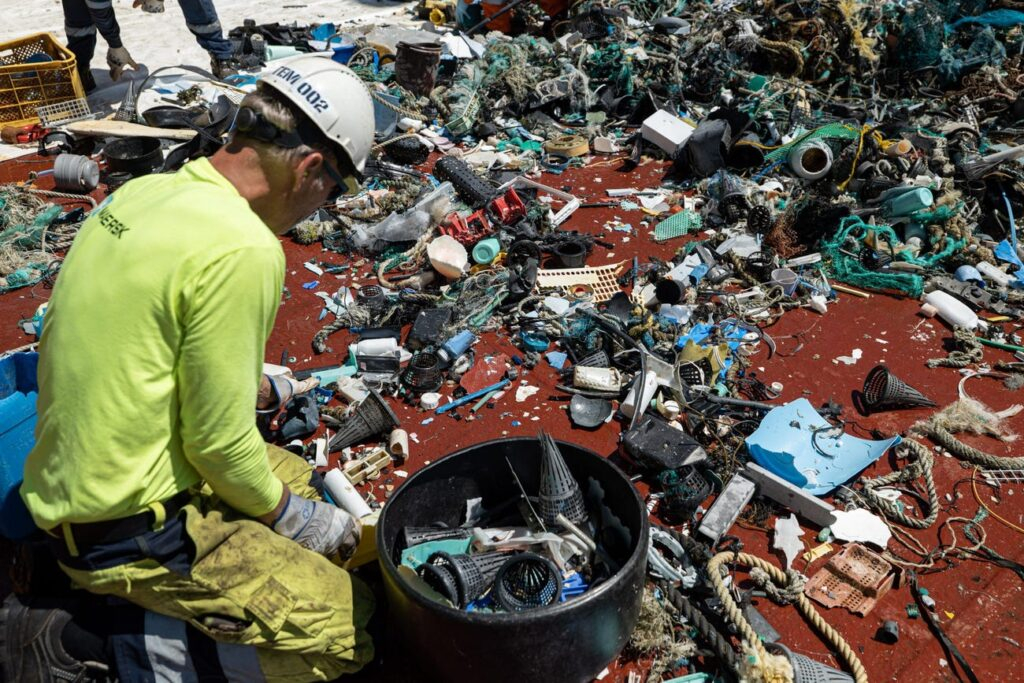
“The Great Pacific Garbage Patch can now be cleaned,” announced Dutch entrepreneur Boyan Slat, the wonderkid inventor who’s spent a decade inventing systems for waterborne litter collection.
Recent tests on his Ocean Cleanup rig called System 002, invented to tackle the 1.8 trillion pieces of plastic pollution, were a success, leading Slat to predict that most of the oceanic garbage patches could be removed by 2040.
Intersections of ocean currents have created the massive floating islands of plastic trash—five slow-moving whirlpools that pull litter from thousands of miles away into a single radius.
The largest one sits between California and Hawaii, and 27-year-old Slat has been designing and testing his systems out there, launching from San Francisco since 2013.
GNN has reported on his original design for the floating device, but his engineering team improved upon it. System 002, nicknamed “Jenny,” successfully netted 9,000 kilograms, or around 20,000 pounds in its first trial.
It’s carbon-neutral, able to capture microplastics as small as 1 millimeter in diameter, and was designed to pose absolutely no threat to wildlife thanks to its wide capture area, slow motion, alerts, and camera monitors that allow operators to spy any overly-curious marine life.
Jenny consists of two boats dragging a very long net in a U-shape behind them.

They use computational modeling to predict where and at what speed the movements in the water will be shifting the plastic. They then fill up their net, pull it on board, and bring it ashore for recycling.
The team are also turning some of the trash they collect into designer sunglasses—and earnings from the stylish shades will go toward helping support the nonprofit so they can continue cleaning up the ocean. The new glasses are the first product to be created from the recovered ocean debris—but they say it will not be the last.

A timeline of hope
Slat estimates ten Jennies could clean half the garbage patch in five years, and if 10 Jennies were deployed to the five major ocean gyres, then 90% of all floating plastic could be removed by 2040.https://platform.twitter.com/embed/Tweet.html?creatorScreenName=GoodNewsNetwork&dnt=false&embedId=twitter-widget-1&features=eyJ0ZndfZXhwZXJpbWVudHNfY29va2llX2V4cGlyYXRpb24iOnsiYnVja2V0IjoxMjA5NjAwLCJ2ZXJzaW9uIjpudWxsfSwidGZ3X2hvcml6b25fdHdlZXRfZW1iZWRfOTU1NSI6eyJidWNrZXQiOiJodGUiLCJ2ZXJzaW9uIjpudWxsfSwidGZ3X3NwYWNlX2NhcmQiOnsiYnVja2V0Ijoib2ZmIiwidmVyc2lvbiI6bnVsbH19&frame=false&hideCard=false&hideThread=false&id=1448678660387614722&lang=en&origin=https%3A%2F%2Fwww.goodnewsnetwork.org%2F20000-pounds-of-trash-removed-from-pacific-garbage-patch%2F&sessionId=9abdd83fb87eaf0f8196db7e7c4041056002235f&siteScreenName=GoodNewsNetwork&theme=light&widgetsVersion=f001879%3A1634581029404&width=550px
There are obvious challenges, like the fact that millions of pieces of plastic flow into the oceans every year, and that investors may believe river cleanup is easier, cheaper, and doesn’t require the use of fossil fuels to power the boats.
And that’s why Slat’s nonprofit has also launched a number of ‘interceptor’ barges to clean up polluting rivers, intercepting plastic before it reaches the ocean.

Nevertheless—this is a huge breakthrough in the cleanup of ocean plastics, and one worth celebrating.
SCOOP Up the Innovative News and Share It Far and Wide…
ABC Wide Bay / By Stephanie Doole and David DowsettPosted Fri 15 Oct 2021 at 2:02pmFriday 15 Oct 2021 at 2:02pm, updated Fri 15 Oct 2021 at 5:05pmFriday 15 Oct 2021 at 5:05pm

Help keep family & friends informed by sharing this articleabc.net.au/news/leatherback-turtles-sighting-bundaberg-queensland/100542930COPY LINKSHARE
Rare sightings of leatherback turtles off the coast of Bundaberg could signal a return of nesting on Australian shores.
Key points:
- Leatherback turtles have not nested on Australian shores in 25 years
- Researchers hope the sighting of a mating pair will see them nest locally
- An early start to the Mon Repos nesting season suggests turtles are adapting to climate change
Passengers and crew aboard recent whale-watching tours have been treated to three sightings of the rare creature, including a mating pair.
While loggerhead turtles are often spotted, tour operator Brett Lakey said catching a glimpse of a leatherback was breathtaking.
“On our last tour of the season, a leatherback came right up between the boat and the whales,” he said.
“This is the first time we’ve seen them in years … it’s unreal to see so many in a few weeks.”

Leatherbacks are the world’s biggest sea turtles, growing to more than 1.5 metres long in shell.
They migrate through Queensland waters during spring.
Col Limpus, chief scientific officer with the threatened species operations of Queensland Parks and Wildlife Service, said people often mistook the large creatures for other objects when they were at the surface.
“They think it’s an upturned dinghy with a keel down the midline.”
Want more local news? Sign up to ABC Wide Bay’s weekly email newsletter.
Hope for a threatened species
Sightings of mating leatherback turtles are especially rare, with the last leatherback turtle breeding season in Australia taking place 25 years ago.
The main nesting site was between Agnes Water and Bundaberg, about 80 kilometres from where the mating pair was sighted.
Dr Limpus said the population was almost at crisis level in the Pacific after many have become tangled in equipment laid by fisheries in the 1960s and 1970s.
“It’s declined in recent decades by 99 per cent … there’s almost nothing left.”

The majority of recent mortalities recorded in Australia were caused by traps set up by lobster fisheries in Tasmania and Victoria.
“They feed near the surface on jellyfish and get tangled up in ropes to floats,” Dr Limpus said.
Researchers had been discussing about whether to regard leatherback turtles as extinct as a breeding species in the region, he said.
“Now the whole prospect has changed.”
The female turtle might not lay near to where the courtship occurred, but Dr Limpus said researchers had their fingers crossed that they would see a female turtle come up the beach.
“They could possibly migrate to the Solomons or New Guinea where there’s still a remnant of leatherback nesting.
“We’ll do everything we can to get successful hatching of the egg and the hatchlings heading back out to sea.”

Looking for a cool change
The leatherback sightings come as the first flatback turtle arrived on Mon Repos beach for nesting season on October 9, a month earlier than expected.
Dr Limpus said it was the earliest record of a turtle nesting at Mon Repos off the Woongarra Coast in 54 years of monitoring.
The turtle season is a significant tourism drawcard, with more than 30,000 people visiting the Mon Repos Turtle Centre each year.
The arrival could indicate the turtles are adapting to climate change.
“As the beaches are getting excessively hot for them in mid-summer, we now see them starting their nesting earlier when beaches are cooler,” Dr Limpus said, adding that the change in habit was encouraging.
“It looks like they’ve got the capacity to be able to adjust to some of the problems we’re creating with climate change.”
Posted 15 Oct 202115 Oct 2021, updated 15 Oct 2021
Related posts:
Views: 0
 RSS Feed
RSS Feed

















 October 21st, 2021
October 21st, 2021  Awake Goy
Awake Goy  Posted in
Posted in  Tags:
Tags: 
















